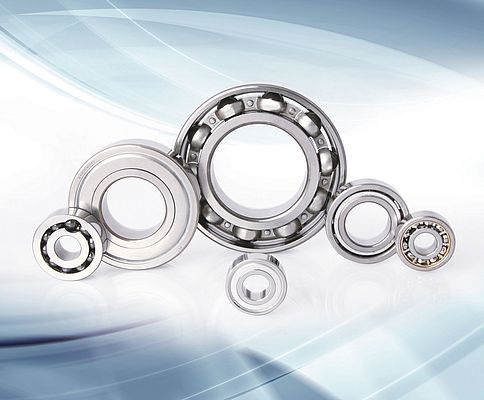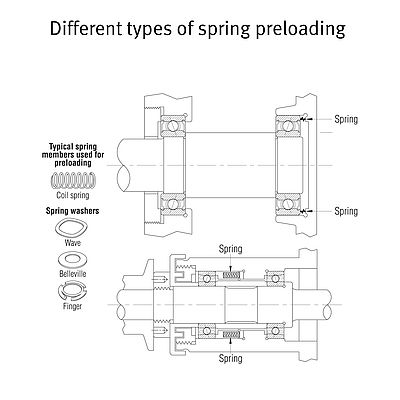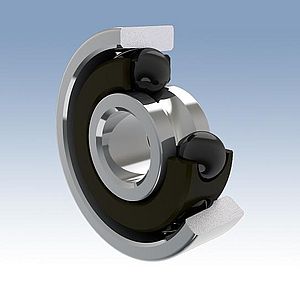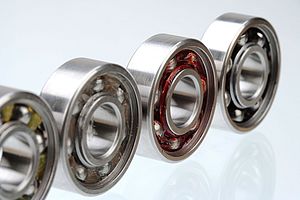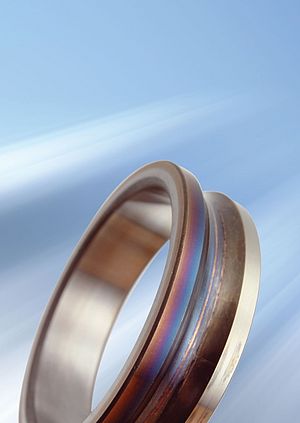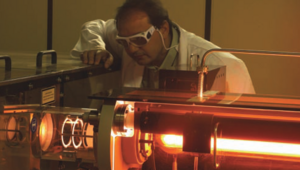Preloading and axial adjustment is a vital but still largely misunderstood area of bearing technology. However, when applied correctly, preloading can reduce or overcome the causes of bearing vibration, heat build-up, noise and fatigue.
Preloading and axial adjustment is a method of removing or controlling the internal clearance of a bearing. This is important because the degree of internal clearance within a bearing can influence a variety of factors, including noise, vibration, heat build-up and fatigue life. When applied correctly, preloading reduces or overcomes the causes of these problems: it controls radial and axial play; provides predictable system rigidity; reduces non-repetitive run-out; reduces the difference in contact angles between the inner and outer rings at very high speeds; and controls ball skidding under very high acceleration.
Bearing Yield
Axial yield is the axial deflection between inner and outer rings after end play is removed and a working load or preload is applied. It results from elastic deformation of balls and raceways under thrust loading. Similarly, radial yield is the radial deflection caused by radial loading. Both types of yield are governed by the internal design of the bearing, the contact angle and load characteristics (magnitude and direction).
In all bearing arrangements where preload is deemed to be necessary, it should be applied as lightly as possible in order to achieve the desired result, avoiding excessive heat generation, which reduces speed capability and bearing life. In addition, it is important to select the most appropriate method of preloading, of which there are three main types: springs, axial adjustment, and preload ground Duplex bearings.
Springs
Spring preloading provides a relatively constant preload because it is less sensitive to differential thermal expansion than rigid preloading, and better accommodates any minor misalignment. Also, it is possible to use bearings that have not had the added cost of preload grinding. One disadvantage of using springs is that they cannot generally accept reversing thrust loads. Space must also be provided to accommodate both the springs and spring travel. In addition, springs may tend to misalign the ring being loaded due to the required clearance fits.
Despite the disadvantages of spring preloading, this method is still a popular one, illustrated by the fact that there are numerous types of springs available for preloading, including coil springs, Belleville, wave or finger spring washers. With regard to mounting, the spring is normally applied to the non-rotating part of the bearing, typically the outer ring. This ring must have a clearance fit in the housing at all temperatures to ensure the preload force from the spring is effective.
Axial Adjustment
Another method of achieving internal clearance control is axial adjustment. This technique calls for the mounting of at least two bearings in opposition, so that inner and outer rings of each bearing are offset axially.
Threaded members, shims and spacers are typically ways of providing rigid preloads via axial adjustment. This technique requires great care and accuracy in order to avoid excessive take up of internal clearance, which may occur during setup by overloading the bearings, or during operation due to thermal expansion. Precision lapped shims are normally preferred to threaded members here, as helical threads can lead to misalignment. The shims should be manufactured to parallelism tolerances equal to those of the bearings, because they must be capable of spacing the bearings to accuracies of 1-2 micrometres or better. Bearing ring faces must be well aligned and solidly seated and there must be extreme cleanliness during assembly. Axial adjustment does not increase bearing friction and is therefore preferred for very low torque applications.
Duplex Bearings
The third main method of applying preload is to utilise Duplex bearings. In contrast to springs and the axial adjustment method, using Duplex bearings offers the advantage that the means of achieving preload is built-in. In effect, this method of preload can be the simplest for the customer, who receives the bearings ready to mount and with the confidence that those bearings are preloaded to the precise requirement of the application.
Duplex bearings are matched pairs of bearings that have their inner or outer ring faces selectively relieved by a precise amount known as the preload offset. When the bearings are clamped together during installation, the offset faces meet, establishing a permanent preload in the bearing set. Duplex bearings are normally speed-limited due to heat generated by this rigid preload.
Duplexing is used mainly where the requirement is for predictable radial and axial rigidity. Duplex bearings can withstand bi-directional thrust loads or heavy uni-directional thrust loads. Other advantages include their ease of assembly and minimum runout.
When using Duplex bearings, consideration should be given to the following: increased torque; reduced speed capacity; sensitivity to differential thermal expansion; susceptibility to gross torque variations due to misalignment; and poor adaptability to interference fitting.
Most Barden deep groove and angular contact bearings are available in universal Duplex sets or can be furnished in specific DB (back-to-back), DF (face-to-face) or DT (tandem) configurations.
By: Gary Hughes, Product Engineering Manager at The Barden Corporation.



